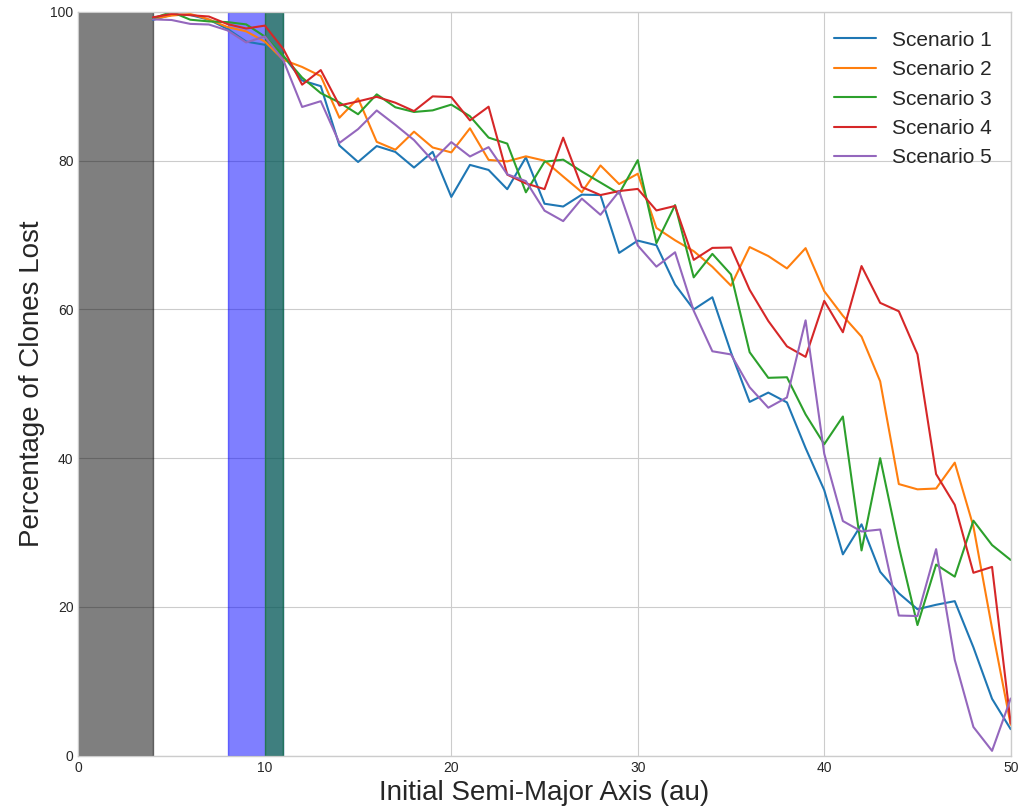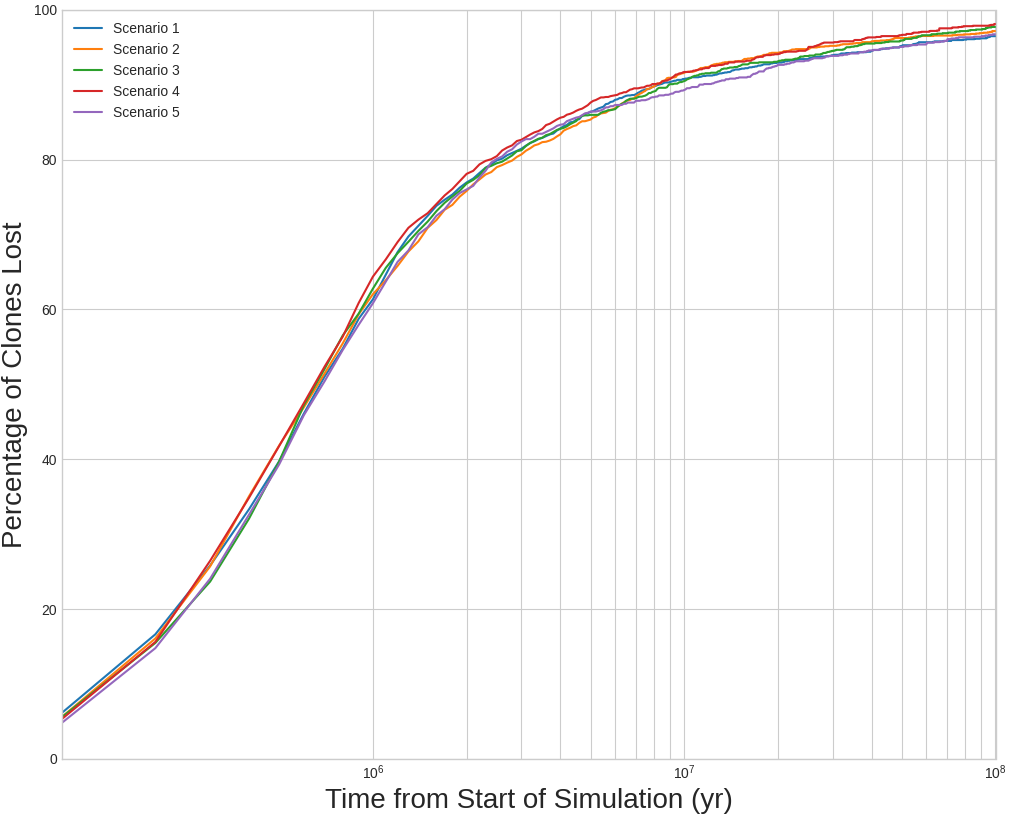- 1Institut UTINAM, Univ. Bourgogne Franche-Comté, Besançon, France (sarah.anderson@univ-fcomte.fr)
- 2Aix Marseille Université, CNRS, CNES, LAM, Marseille, France
Introduction: Radio observations of long-period comet C/2016 R2 (PanSTARRS) revealed that a spectrum remarkably depleted in water (Biver et al. 2018) and dominated by bands of CO+ and N2+, the latter of which rarely seen in such abundance in comets before (Cochran & Mckay 2018). Understanding the dynamic history of this comet is thus of essential importance to understanding the timeline of planetesimal formation in our Solar System. However, tracking the motion of such a small object backward with any degree of certainty is made impossible by the inherently chaotic nature of its motion due to frequent close encounters with the gas giants.
Two studies have independently estimated the possible origin of this comet from building blocks formed in a peculiar region in the Protoplanetary Disk (PPD), near the ice line of CO and N2. Mousis et al. (2021) found that R2’s peculiar N2/CO ratio could be replicated by agglomeration from particles near the N2 and CO icelines (~10-15 au) while CO/H2O ratio would remain deeply depleted inward of the CO iceline. Price et al. (2021) find that the ideal location for the objects to form is beyond a more distant CO iceline. However, this would indicate that more CO-rich comets should exist than previously observed.
Methods: We explore the fates of comets formed from these building blocks using a numerical simulation of early Solar System formation and track the dynamics of these objects in the Jumping Neptune scenario (Nesvorny et al. 2015). We start with Jupiter, Saturn, and three ice giants (Deienno et al 2017). The planetary evolutions meet criteria of similarity with the Solar System today.
We fill the disk between 4 au and 50 au with massless comet facsimiles or ‘clones’. Using a modified SWIFT numerical integrator we track a pre-recorded evolution of the giant planets (J.-M. Petit et al. 1999) and evolve our system over 100 Myr for 5 initial conditions with 50000 clones per set. Our simulations count a clone as lost if it reaches beyond 10,000 au as we do not have the ability to estimate the effects of the galactic tidal forces.

Figure 1: Percentage of clones lost per formation location for each of the five scenarios. The gray zone indicates the limitation of our simulation. The blue zone indicates the N2/CO enrichment zone as predicted by Mousis et al. (2021), while the overlaid green zone indicates the location of the ideal CO/H2O enrichment zone.

Figure 2: Percentage of clones formed between 8 and 11 au lost over the 100 Myr simulation time, with time given in log scale.
Results: We examine the final orbital elements of each clone, identified by its initial semi-major axis. Within the first 5 Myr, over a third of all clones are ejected from the Solar System. A significant loss of clones occurs before Jumping Neptune at ~10 Myr: after this time, the area around the giant planets is entirely cleared.
We examine the percentage of clones ejected in our simulations for each 1 au annulus (Fig. 1). Over 95% of the clones are ejected before the end of the 100 Myr between 4 and 10 au. This number drops to 90% around 12 au. Beyond 40 au – the current location of the Classical Edgeworth–Kuiper Belt – contains objects that do not move far from where they are formed. The behavior of these clone sets is consistent between scenarios.
On average, each simulation loses 75% of its clones by 100 Myr, losing 90% of all clones formed in the 8-20 au range, 97% of all clones formed in the 8-10 au range, and ~80% in the 20-30 range. Consistently they lose 96% of all comets formed between 10-11 au. If we narrow that region to 8-11 au, we find that 60% of clones formed in this region are ejected in the first 1 Myr and 90% after 10 Myr, as seen in Fig. 2.
The majority of objects formed between Saturn and the N2 iceline are ejected early in the simulation so that even by the time the Jumping Neptune scenario happens, the clones are already gone. This could explain the lack of comets rich in N2 and depleted in H2O: they were formed in a very narrow region, and that region was unstable due to Jupiter and Saturn. Another factor would be the rapidity at which this reservoir depleted. This would similarly explain the lack of CO-rich comets: while they would form near their iceline, this area empties rapidly due to the influence of giant planets.
With only on average ~0.4% of the total remaining comet population having formed in the region identified by Mousis et al. (2021), the odds of finding one are incredibly low. However, we should consider the possibility that many of these surviving comets may have lost their bulk hypervolatile species in the billions of years since their formation, or even within the timeframe of our simulation (Lisse et al. 2022).
Further numerical simulations are required in order to investigate the behavior of these comets beyond 10,000 au. If these comets are indeed ejected from the Solar System, it would be a likely explanation for the composition of interstellar visitors, such as interstellar comet 2I/Borisov, which was measured to have CO/H2O between 35%-173%, significantly higher than the average cometary values for the Solar System, though not as high as comet R2.
References
Biver N. et al. 2018, A&A 1432-0746
Bodewits D. et al. 2020, Nature Astro 4 867
Cochran A.L. and Mckay A.J. 2018, ApJ 854L10C
Cordiner M.A. et al. 2020, Nature Astro 4 861
Deienno R. et al. 2017, AJ, 153:153
Lisse, C. M. et al. 2022, Vol. 2678, LPI Contributions, 2045
Mousis O. et al. 2021, PSJ 2 72
Nesvorny D. et al. 2015, AJ 150, 73
Opitom C. et al. 2019, A&A A64 14
Petit J.-M. et al. 1999, Icarus 141:367
Portegies Zwart S. et al. 2021, A&A 652 A144
Price E. et al. 2021, ApJ 913 9P
How to cite: Anderson, S., Petit, J.-M., Noyelles, B., Mousis, O., and Rousselot, P.: Volatile-rich comets ejected early during Solar System formation, Europlanet Science Congress 2022, Granada, Spain, 18–23 Sep 2022, EPSC2022-521, https://doi.org/10.5194/epsc2022-521, 2022.

